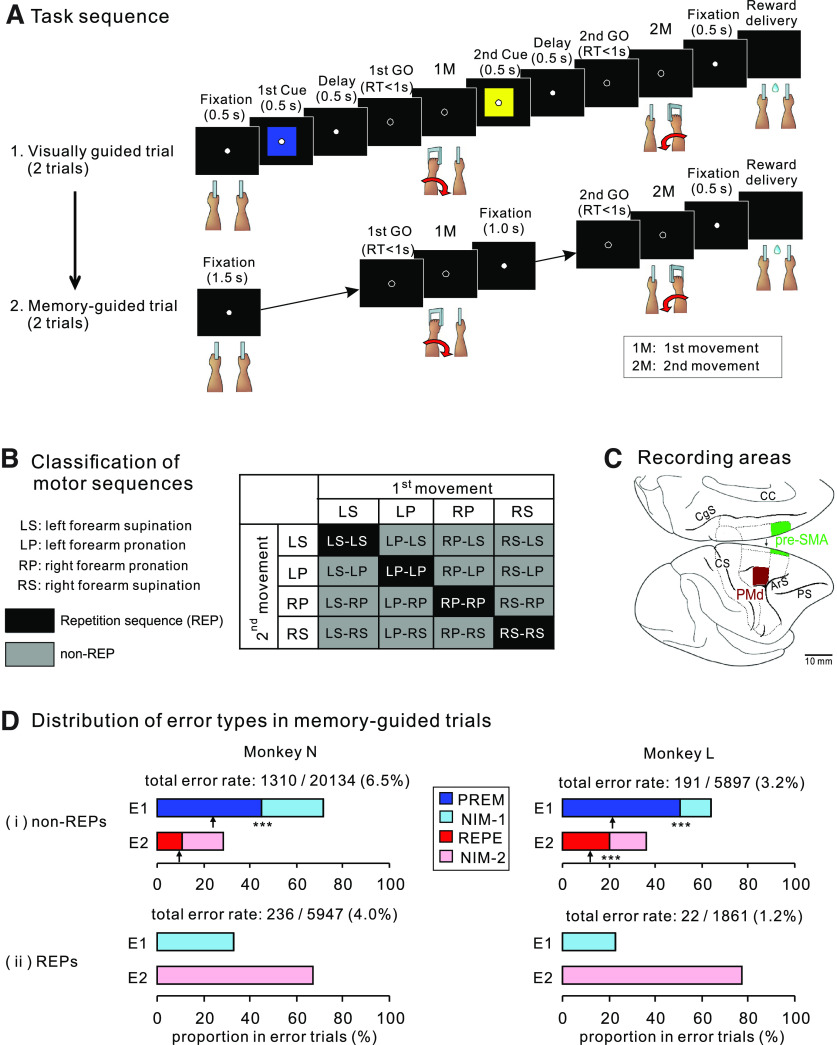Figure 1.
Behavioral task, recording areas, and task performance. A, Task sequence of events in an example trial block of a behavioral task. The top row illustrates an example of a visually guided trial (VIS), in which the animals performed a series of two movements in accordance with two cues. The monkey was required to memorize a particular motor sequence (left forearm pronation–right forearm pronation in this example) while performing the visually guided trials twice. The bottom row depicts a memory-guided trial (MEM) in which the order of the two movements is memorized; only the GO signals are given. In MEMs, the memorized motor sequence was performed twice. B, Classification of motor sequences performed by the monkeys. A matrix of 16 motor sequences determines the order of pronation or supination of the forearm. Shaded cells in the matrix indicate repetition sequences (REPs, black) and nonrepetition sequences (non-REPs, gray). C, Recorded areas. Medial view of the right cerebrum upside-down (top) and lateral view (bottom). Rostral is to the right in both views. Recorded areas are shaded light gray (PMd) or dark gray (pre-SMA). CC, corpus callosum; CgS, cingulate sulcus; CS, central sulcus; ArS, arcuate sulcus; PS, principal sulcus. D, Classifications of error trials when each monkey had to perform (i) non-REPs and (ii) REPs from memory. Each pair of bar graphs indicates the percentage of errors that occurred in the 1M (E1) and 2M (E2). For i, errors in the 1M are classified into PREM and NIM-1 errors, whereas the errors in the 2M are subdivided into REPE and NIM-2 errors. The upward arrow under each bar indicates the chance level of the occurrence ratio (1:2) for PREM versus NIM-1 errors and that for REP versus NIM-2 errors; ***p < 0.001. For ii, note that PREM or REPE errors cannot be determined for REPs by definition.

